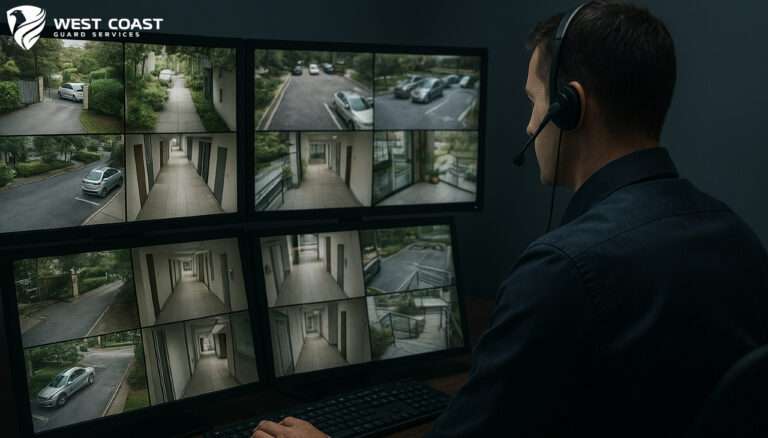In 2025, hospital security will take on greater significance. Hospitals are open 24 hours a day, accepting patients from vulnerable populations. Securing the greatest risk of underlying violence, theft, and disruption of medical services is paramount. A Hospital Security Guard doesn’t just travel hallways from one case to another, but is trained in de-escalation of violence.
The guards understand emergency, crowd management, and advanced styles of camera surveillance. A hospital security enhances a safe environment where healing can take place. They also protect hospital staff, patients, and visitors from the risk of harm.
Core Responsibilities of Hospital Security in 2025
1. Access Control and Visitor Management
Hospitals must know who is coming and going in their facilities. Security Guards are present to ensure that visitors adhere to proper check-in procedures. Biometric scanning, smart ID cards, and other forms of access to sensitive areas of hospitals have become even more logical in 2025. Hospitals would also have to protect their staff and patients, such as operating rooms, ICUs, pharmaceutical storage units, etc.
2. Emergency Preparedness and Response
An emergency could arise at any time. Security follows hospital security protocols and understands the need to prepare for a natural disaster. Security guards are trained regularly in the process of evacuation and lockdown. A trained and experienced security department can save lives and prevent injuries during crises.
3. Patient and Staff Safety
Workplace violence in hospitals is an ongoing concern. Nurses or doctors can be subjected to aggressive interactions from rationally distressed patients. The trained hospital security guard protects staff without running the risk of conflict escalation. So medical teams are put in a position to provide healthcare rather than worry about their personal safety.
4. Protecting Assets and Sensitive Information
Hospitals are home to costly medical equipment and private patient records. In the absence of proper security, both are at risk of theft or tampering. Modern-day hospital security combines the physical element with a significant emphasis on cybersecurity. These cybersecurity access controls ensure patients’ records and costly equipment are safe.
5. Surveillance and Monitoring
In a hospital environment, the security team will monitor CCTV cameras and analyze the live feeds. They look for suspicious activity. They will identify the need to act while they observe the suspicious behavior escalating to a higher level of threat. Security Commands are using artificial intelligence (AI) for analytical reviews. The security teams can now build patterns of behaviour in which the officer can plan an appropriate response.
Emerging Technologies for hospital’s safety
Technology is changing the face of how hospital security looks proactive. Some of the most differentiating technologies are:
- AI-enabled video: Cameras embedded with AI can detect abnormal movement, missing bags, or influenced behaviour.
- Facial recognition: identify and allow the entry of authorized staff and restrict access to an unknown visitor.
- Mobile alerting systems: staff will use their panic buttons, or mobile phone apps to alert security to an immediate threat.
- Drone patrols: Hospital campuses are now using drones to patrol and identify threats across parking lots and undefined perimeters.
- Integrated cybersecurity: Protecting patient information is as important as securing the actual hospital location. Security now has firewalls, data encryption, and intrusion detection.
Issues Facing Hospital Security
Hospitals are safer than they have ever been; however, there are still significant challenges.
High Volume of Foot Traffic
Hospitals are never closed, making it hard to monitor the available flow of visitors and emergency patients.
Aggression and Violence
The hospital security guards have significant skills. They independently diffuse conflict for a growing number of assaults against healthcare workers.
Cybersecurity Threats
Cyber hackers are specifically targeting hospitals and hospital systems to access sensitive medical information.
Hospital Security Best Practices in 2025
When hospitals get serious about safety, they will employ an overarching strategy that involves the following:
- By employing licensed hospital security guards who protect the areas.
- Conducting risk assessments regularly to identify vulnerabilities.
- Having some form of visitor ID checks and restricted access systems.
- Training and educating hospital staff on security awareness and emergency responses.
- Utilizing professional security services for commitments that will customize value-added security solutions.
Conclusion
As we enter 2025, Hospital Security continues to be a vital part of health care safety. From workplace violence to potential cyber threats, hospitals can no longer rely on luck. Instead, they must count on trained security guards, technology, and an organized healthcare security plan to keep patients, staff, and visitors safe.
At West Coast Guard, our goal is to provide hospital security services that recognize and meet the needs of today’s operational healthcare environments. While we are known as a security guard company Los Angeles, our security guards guarantee that hospitals are safe and inviting. If you want to improve your hospital’s safety strategy, the time is now to partner with experts who will understand specific challenges to healthcare.




